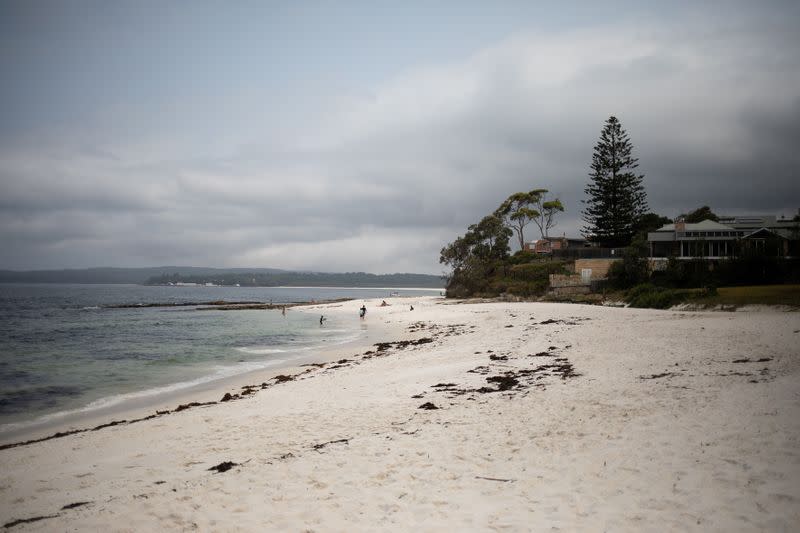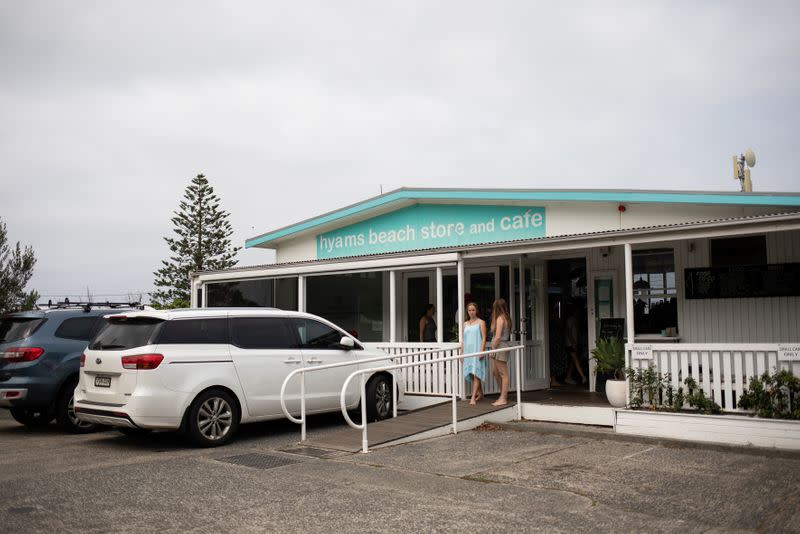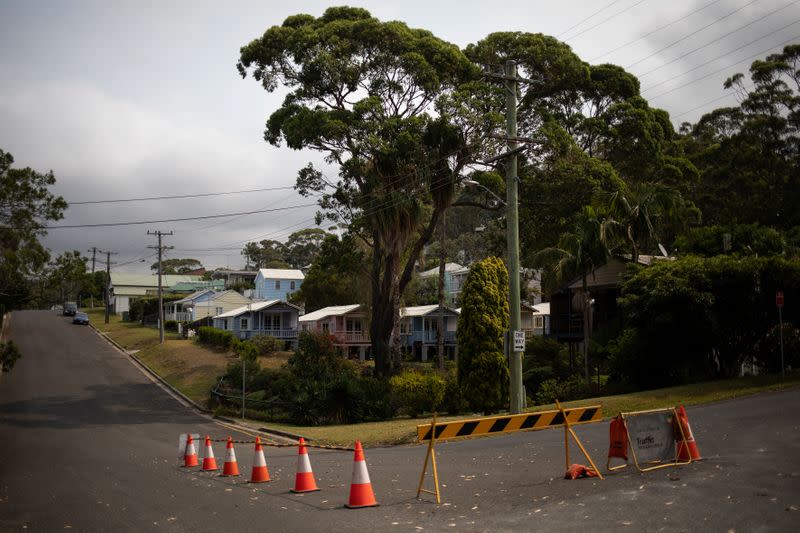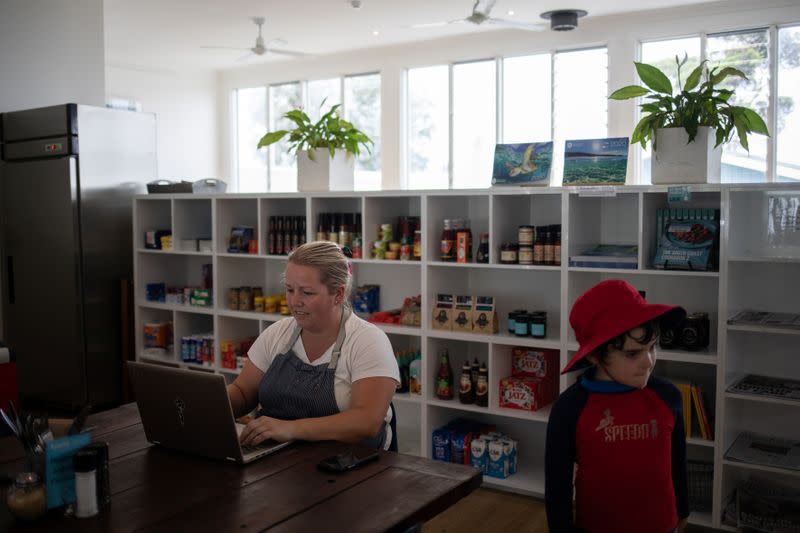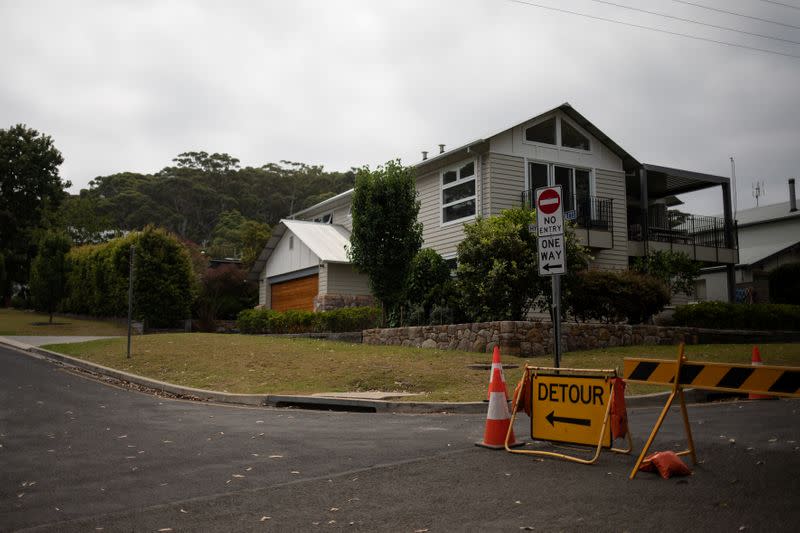Beach haven turns ghost town as Australia fires hit tourism
By Martin Petty
HYAMS BEACH, Australia (Reuters) - On any other January week, tourists would be jostling for space on the bright white sands of Australia's Hyams Beach.
Not this week. Raging bushfires across southwestern Australia are taking a big toll on tourism, reducing some resorts to ghost towns in New South Wales in peak season as vacationers fear being encircled by blazes.
Authorities blocked access to Hyams Beach at the weekend amid severe drought, record high temperatures and winds fanning fires as close as 15 kilometres (9 miles) away.
On Tuesday, there was only a trickle of the usual throngs on the sand, with streets eerily empty.
"We come every year, we've never seen it like this before. It's normally mayhem," said Jemima Albrecht, 31, a teacher from Bendigo in Victoria State, adding that fires were blocking her roads home. "It was safer for us to stay here."
Hyams Beach boasts stunning turquoise waters and what locals say is the world's whitest sand, making it a haven for selfie-seekers and an Instagram favourite.
The tiny town's narrow roads were deserted on Tuesday but for residents' parked vehicles, with no sign of the lines of day-trippers normally corralled into a traffic management system.
One retired couple read books on deckchairs on the near-empty beach as a man and his children hunted for crabs in rock pools. A group of young women bathed in the strong afternoon sun, posing for pictures between dips.
"DEVASTATING FOR US"
Fires have killed 25 people this summer season and torn through more than 8.6 million hectares (21.3 million acres) of land, an area nearly the size of Austria, razing thousands of buildings and cutting off power and communications.
Navy ships have been evacuating thousands of vacationers and residents from the coastal town of Mallacoota, where 4,000 people fled to the waterfront on New Year’s Eve.
Though there is no national data yet, there is bound to be a major negative impact for tourism which accounts for 3.1 % of Gross Domestic Product. Last summer, Australia attracted 2.71 million holidaymakers, many fleeing the northern hemisphere winter.
Hotels in the largest city of Sydney saw a fall of 10% in guest numbers in December.
"This is going to have a huge economic impact for the whole area for some time," said Phoebe Alison, 38, who runs her family's three-decade-old restaurant and coffee shop in Hyams Beach, about 200 km (124 miles) south of Sydney.
Between October and April, the restaurant's 50 seats are usually all taken and people queue outside, she said. After counting only three people on the beach on Saturday, she told half her staff not to come to work this week.
"I've seen fires here but nothing on this scale and I've never seen it so dry," she said.
"It's going to be devastating for us."
Just a few minutes away, stretches of the main highway are lined with blackened trees on scorched earth. Many road signs are barely readable, text melted onto scorched metal sheets.
There are some perks though: a break from the hordes of tourists, discarded trash and traffic snarl ups, plus a rare chance to enjoy a stretch of beach alone.
"I bet the locals love it," said builder Tony Williams, 53, as he emerged from the sea. "In some ways, it's a good thing tourists have gone for a while."
(Editing by Andrew Cawthorne)

